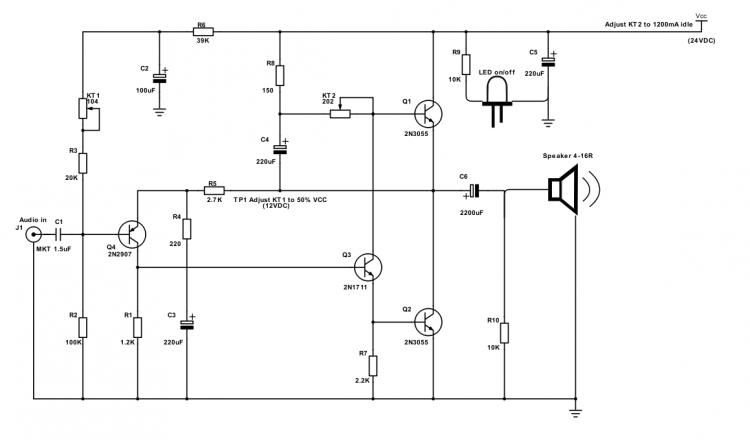I really like the sound of my jlh 1969 10w amp, but it lacks power for driving my speakers.
Would it be possible and make sense to bi amp, and use the jlh for my tweeters only? The tweeters are scanspeak d2905-9700 and are supposedly has a sens of 90dB.
Would it be possible and make sense to bi amp, and use the jlh for my tweeters only? The tweeters are scanspeak d2905-9700 and are supposedly has a sens of 90dB.
Makes perfect sense, eliotsounds have a article regarding that, I'm doing something similar like you, I will triamp with active filters, jlh 2003 for tweeter, hiraga 30w for mid, and bryston 4bsst for bass duty.
Elliott Sound Products - The Audio Pages (Main Index) › bi-amp2
Web results
Benefits of Bi-Amping - Elliott Sound Products
Elliott Sound Products - The Audio Pages (Main Index) › bi-amp2
Web results
Benefits of Bi-Amping - Elliott Sound Products
Last edited:
Have you considered the JLH class A -1996 version where he addresses the power by increasing it to 15W ?
https://hifisonix.com/wordpress/wp-content/uploads/2018/02/jlh1996.pdf
https://hifisonix.com/wordpress/wp-content/uploads/2018/02/jlh1996.pdf
Thanks guys.. Not that tech savvy though ;-)
This is the version I have (supposedly 2x18W, though I think thats a bit exaggerated):
Hood 1969
I have already bought 2200uF Mundorf capacitors to replace the current 1500 uF (supposedly bad quality) ones.
Not sure which ones are the ones you are suggesting to replace t 10uF/10n now? 🙂


This is the version I have (supposedly 2x18W, though I think thats a bit exaggerated):
Hood 1969
I have already bought 2200uF Mundorf capacitors to replace the current 1500 uF (supposedly bad quality) ones.
Not sure which ones are the ones you are suggesting to replace t 10uF/10n now? 🙂


The JLH 1969 circuit is 10W the 1996 circuit is 15W --if you read my post #3 link.
If they are saying its 18W then it isn't the 1969 circuit --OR they have modified it by using much higher gain output BJT,s which looks likely going by your pictures .
If they are saying its 18W then it isn't the 1969 circuit --OR they have modified it by using much higher gain output BJT,s which looks likely going by your pictures .
Yup, I think that is the case. For the price that I paid, I suspect the transistors to be countefeit anyway, and I will probably replace them at some point.
Anyway.. Where in the circuit are the 10uF/10N mentioned? I thought the output capacitors was 2200uF (C6)

Anyway.. Where in the circuit are the 10uF/10N mentioned? I thought the output capacitors was 2200uF (C6)

I ran the JLH for tweeters too at first, but I think where it really shines is in the midrange, so if you have 3-way speakers, run mid&tweeter on the JLH.
If you want to improve bass, increase C1, C3, C4 and C6 x10. Maybe after this you could use it full range.
If you want to improve bass, increase C1, C3, C4 and C6 x10. Maybe after this you could use it full range.
C6 10 uF, C1 10-22n Low frequency limitation 3000 Hz
Thanks for your suggestion. Im capable of soldering, so no problem doing that. However, i would like to understand what it does exactly.
Could someone please explain what happens if i do the swap? Not knowing the science behind, it seems a little 'much' to replace a 1500uF cap with 10uF 🙂
- Home
- Amplifiers
- Solid State
- Bi amping - JLH 1969 for scanspeak d2905